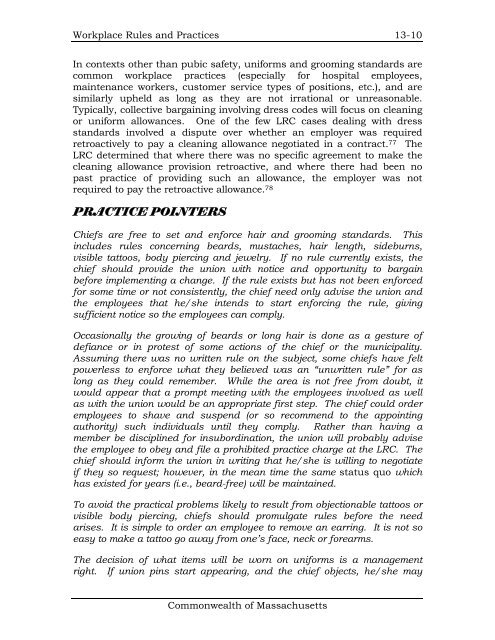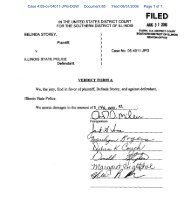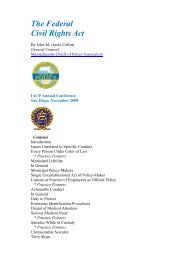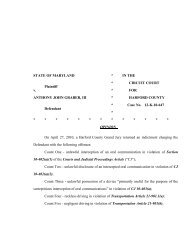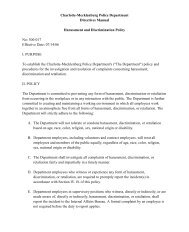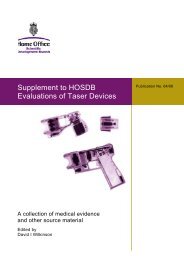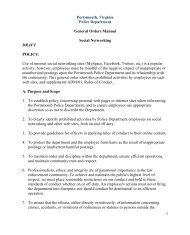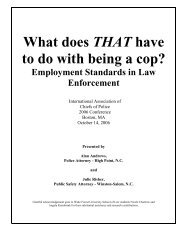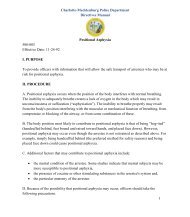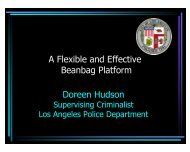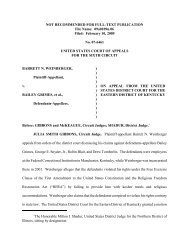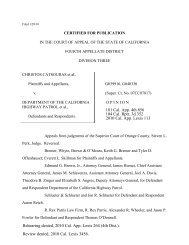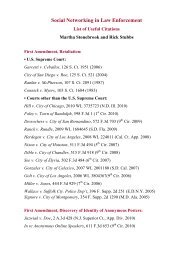Management Rights - AELE's Home Page
Management Rights - AELE's Home Page
Management Rights - AELE's Home Page
You also want an ePaper? Increase the reach of your titles
YUMPU automatically turns print PDFs into web optimized ePapers that Google loves.
Workplace Rules and Practices 13-10<br />
In contexts other than pubic safety, uniforms and grooming standards are<br />
common workplace practices (especially for hospital employees,<br />
maintenance workers, customer service types of positions, etc.), and are<br />
similarly upheld as long as they are not irrational or unreasonable.<br />
Typically, collective bargaining involving dress codes will focus on cleaning<br />
or uniform allowances. One of the few LRC cases dealing with dress<br />
standards involved a dispute over whether an employer was required<br />
retroactively to pay a cleaning allowance negotiated in a contract. 77 The<br />
LRC determined that where there was no specific agreement to make the<br />
cleaning allowance provision retroactive, and where there had been no<br />
past practice of providing such an allowance, the employer was not<br />
required to pay the retroactive allowance. 78<br />
PRACTICE POINTERS<br />
Chiefs are free to set and enforce hair and grooming standards. This<br />
includes rules concerning beards, mustaches, hair length, sideburns,<br />
visible tattoos, body piercing and jewelry. If no rule currently exists, the<br />
chief should provide the union with notice and opportunity to bargain<br />
before implementing a change. If the rule exists but has not been enforced<br />
for some time or not consistently, the chief need only advise the union and<br />
the employees that he/she intends to start enforcing the rule, giving<br />
sufficient notice so the employees can comply.<br />
Occasionally the growing of beards or long hair is done as a gesture of<br />
defiance or in protest of some actions of the chief or the municipality.<br />
Assuming there was no written rule on the subject, some chiefs have felt<br />
powerless to enforce what they believed was an “unwriten rule” for as<br />
long as they could remember. While the area is not free from doubt, it<br />
would appear that a prompt meeting with the employees involved as well<br />
as with the union would be an appropriate first step. The chief could order<br />
employees to shave and suspend (or so recommend to the appointing<br />
authority) such individuals until they comply. Rather than having a<br />
member be disciplined for insubordination, the union will probably advise<br />
the employee to obey and file a prohibited practice charge at the LRC. The<br />
chief should inform the union in writing that he/she is willing to negotiate<br />
if they so request; however, in the mean time the same status quo which<br />
has existed for years (i.e., beard-free) will be maintained.<br />
To avoid the practical problems likely to result from objectionable tattoos or<br />
visible body piercing, chiefs should promulgate rules before the need<br />
arises. It is simple to order an employee to remove an earring. It is not so<br />
easy to make a tatoo go away from one’s face, neck or forearms.<br />
The decision of what items will be worn on uniforms is a management<br />
right. If union pins start appearing, and the chief objects, he/she may<br />
Commonwealth of Massachusetts


